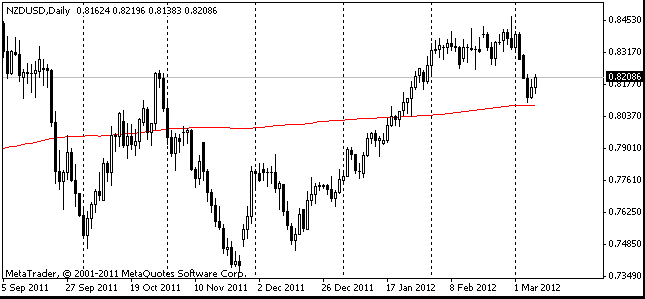EUR/usd
The single currency had quite a hard day Yesterday. While the daily open was at 1.3450, the daily low was reported a bit above 1.33. It was largely due to the poor stats on the EU economy. In the fourth quarter the region's economy shrank by 0.6%. The same slowdown was experienced by Germany. The French economy shed 0.3%, but it was growing very slowly last year and, as a result, the yearly decline made 0.3%. Italy's economy lost 0.9% and the yearly rate made huge – 2.7%. Portugal stroke the ground: -1.8% in 4Q after the decline by 0.9% in 3Q and by 1% in 2Q. This country is a good example of how adverse the austerity measures can be. Now it is clear why the European leaders want to cheer up Portugal, pointing at positive shifts. The annual rate of decrease makes 3.8%. It was worse only in early 2009. The same can be said about the quarterly decrease rate. It was worse only when the crisis was in full swing. If you remember, we resorted to similar comparisons last summer, when we dealt with Germany's sentiment indices. Now the indices are going up and the economy after about half a year has gone down, which should put pressure on the single currency. Yet, we shouldn't exaggerate it too much, no apocalypse is coming forth for Europe. Yet the financial market of the periphery countries stabilizing and this means that the ECB's outlook was correct: the economy will go on the mend in the second half of the year (in the third and fourth quarters). For the currency market it means that last year's scenario will be played out again.

GBP/USD
Wednesday's selling developed into systematic selling of the pound on Thursday. The British pound hit the lowest level since last July. Thursday's low was 1.5470. Today we observe Friday's normal retracement. There is nothing surprising about it after such a powerful move. As you remember, this week the sterling has lost more than 2% against the dollar, over 2.5% against the euro (in the first half of the week) and about 3.5% against the yen. There is hardly anyone who will call the sterling a strong currency now. Yet, in our opinion, it is not early now to look for a convenient moment to quit shorting the pound.

USD/JPY
usdjpy has dropped to 92.50, which corresponds to this week's opening levels. The weekly charts show long upper shadows in the candles, however this week risks closing negative just like the previous one. Of course, the main reason here is anticipation of unpleasant comments on the Japanese monetary policy by g20. The country will have to beat off attacks not only of other developed countries, secretly dreaming to achieve the same thing, but also of the developing countries whose export-oriented economies will suffer much should G7 pursue the beggar-thy-neighbor tactic.

NZD/USD
Surprising enough, the best performance against the US dollar was shown by its New Zealand counterpart. This quite a small export-oriented country has endured big troubles with its economy. Now it is in the recovery phase after the earthquake, but still benefits from favourable commodity prices in the world (the food price index grew by 1.9% in January). To be more exact, from their recovery after the dramatic decline. Anyway, the country can boast of something in regard to the domestic fundamentals. In 4Q New Zealand's retail sales grew by 2.1%. Home sales have gone up by 2.2% y/y and the increase in the January Manufacturing PMI was highest since last May.
